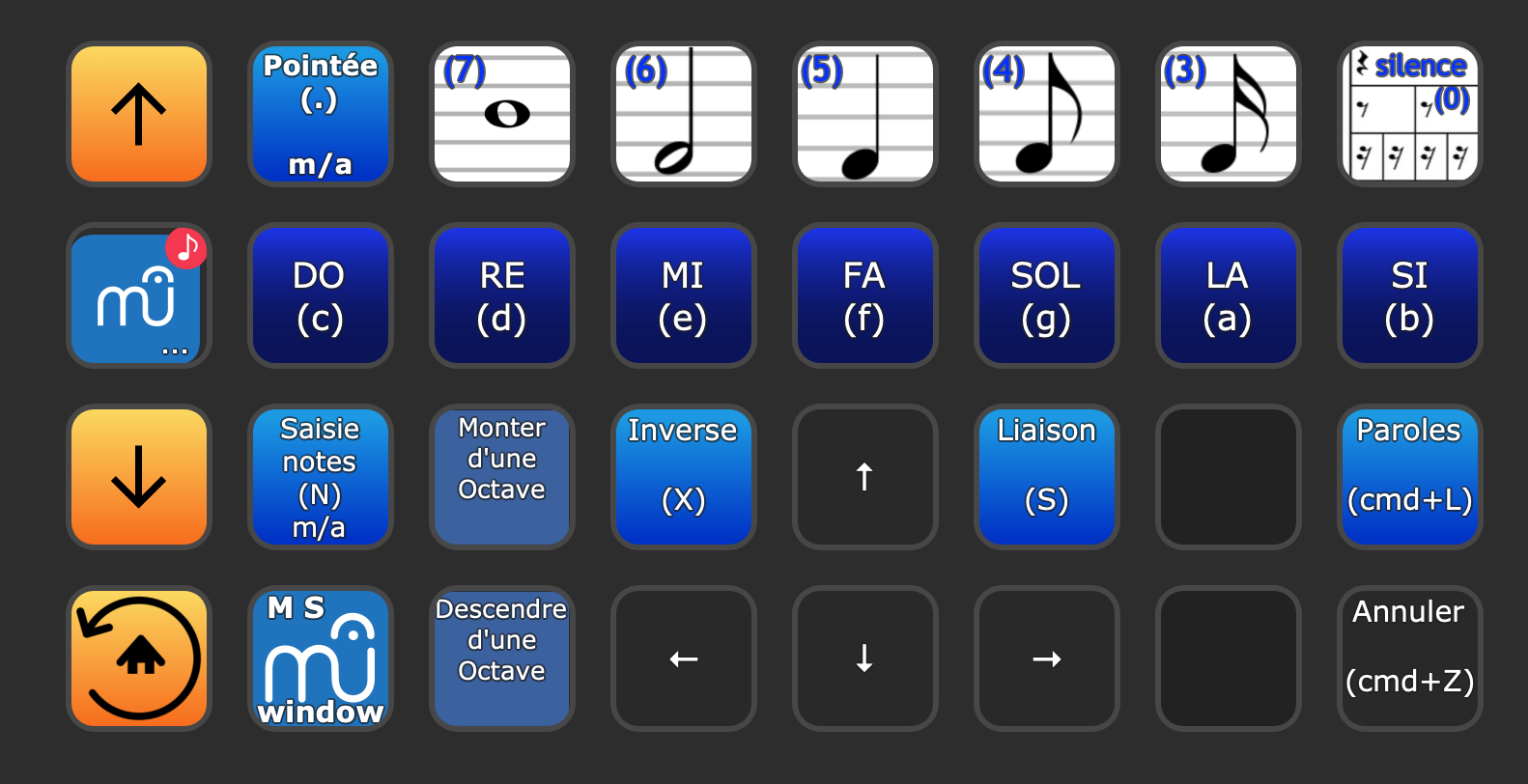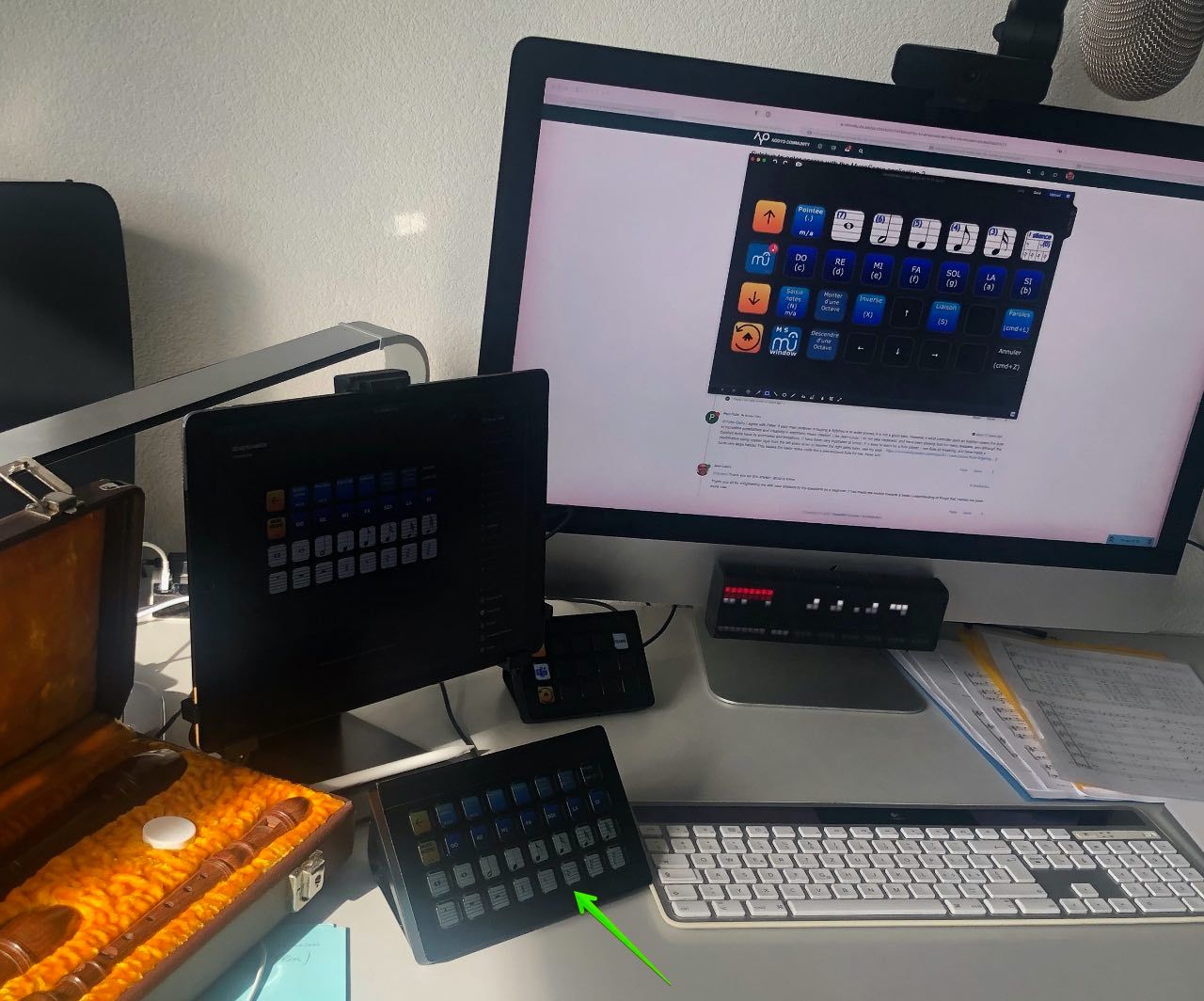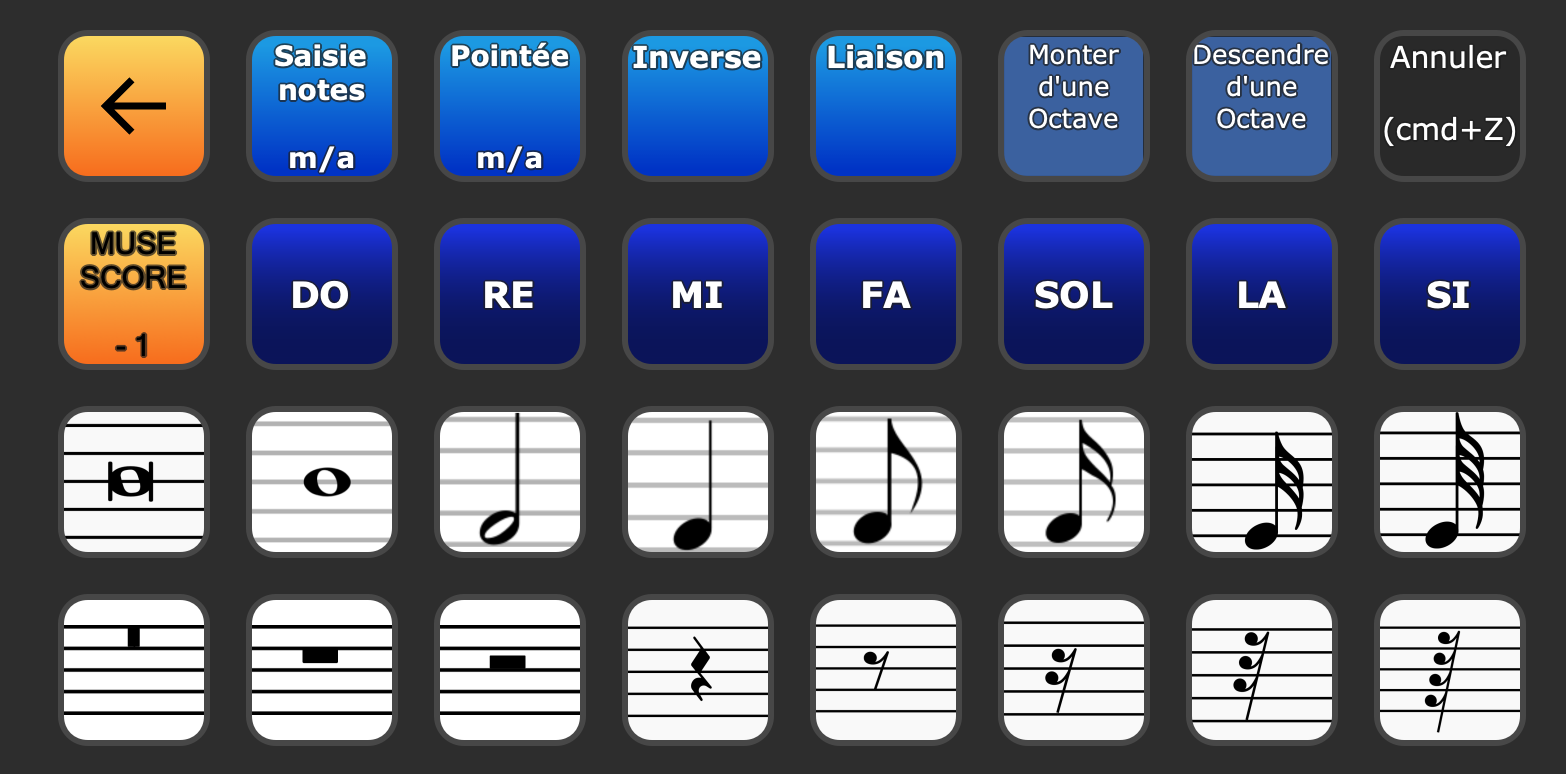Sylphyo to enter scores with the MuseScore application ?
-
Question from a beginner (who is about to acquire a Sylphyo)
Is it also possible to use this beautiful instrument that is the Sylphyo to enter scores with the MuseScore application (instead of a midi keyboard) by connecting it directly with a simple USB cable (Type-A to mini-B type) from the USB socket of the Sylphyo to the USB Type-A socket of an iMac 5K?
All this without having to use the LINK box?
Has anyone of you experienced this?
Thank you in advance for your adviceQuestion de débutant (qui s'apprête à acquérir un Sylphyo prochainement)
Est-il aussi possible d'utiliser ce bel instrument qu'est le Sylphyo pour la saisie de partitions avec l'application MuseScore (à la place d'un clavier midi) en le connectant directement avec un simple câble USB (Type-A vers type mini-B) depuis la prise USB du Sylphyo vers la prise USB type-A d'un iMac 5K ?
Tout ceci sans devoir utiliser le boitier LINK ?
Quelqu'un de vous l'aurait-il expérimenter?
Merci d'avance pour vos indications -
@Jean-Louis Theoretically this is possible to enter melody lines (single notes). Chords may be tricky. I have not done this, but am interested in how accurately the Sylphyo would do this....
-
I just tried it, did not work for whatever reason. I switched off all additional stuff in the Sylphyo, activated dynamic velocity, set the channel to 1. Sylphyo as input was selected in MuseScore and Midi Monitor (on Mac) showed incoming notes with various velocities. But MuseScore did not react. I can write notes with the Keyboard in Muse Score.
But why would you want to use a windcontroller to enter single notes in MuseScore? A keyboard is much better for that. You cannot record your performance anyway, just painting note after note. At least I don't know another way in MuseScore, maybe I am wrong.
-
This may not be of great help.
Below is a link to a YouTube video from the very helpful Alistair Parnell, setting up a rival scoring program, Sibelius, to accept input from a wind controller from another company.
Maybe some of the settings would be similar to the ones needed in MuseScore with the Sylphyo?
https://tinyurl.com/4k6ww2vr -
@Paul-Flute Thank you for your indications, if I succeed later, I will post the detailed information
-
@Peter-Ostry Thank you Peter for taking the time to do this whole test and for providing me with the background and details.
The information is all interesting and the result somewhat surprising.You rightly ask the question why a windcontroller to do this.
Not knowing how to play the keyboard and not being a composer, but practicing the flute for a long time, I imagined to save time for the regular input of acapella scores for a choir, in which case I would be able to play one after the other the soprano, alto, tenor and bass voices and the MuseScore application would do the input and would allow me to get a quality printout on paper.
The potential offered by the MuseScore application (open source software) is amazing.It is therefore for a particular need that I imagined that as a beginner I could also use the Sylphyo.
But of course this would only be a complement to the pleasure of playing this instrument whose potential, according to many testimonies, seems incredible for those who know how to give it time over time
Again thank you for your comprehensive answer.
Jean-Louis -
@Gromit Thanks for the link, I just watched the video, indeed the advice given by Alistair Parnel for another windcontroller and another score editor software could be very useful in finding the parallels on the Sylphyo and MuseScore side.
When the time comes, if at all, when I have succeeded (in a few weeks) I will give my feedback, but perhaps in the meantime someone from the Sylphyo community who already has this experience will clarify the subject.
-
@Jean-Louis I managed to input some notes in MuseScore with my Sylphyo. (using the Link) Watch; https://www.youtube.com/watch?v=IZ1b1aF9lpg. You can also create midi files in other programs, which may be easier for some folks, (if they allow you to export midi files), and drag them into MuseScore. If you are going to play with midi, I highly recommend something like Logic X as well as Mainstage. If using a mac. Cheers
-
@Paul-Flute Thank you Paul for the positive feedback on your experience, the link provided and the suggestions which will be very useful to me.
-
@Jean-Louis In your original post, you asked the question, "All this without having to use the LINK box?".
Yes, you could connect the Sylphyo direct to your computer using a USB cable. -
@Jean-Louis said in Sylphyo to enter scores with the MuseScore application ?:
Not knowing how to play the keyboard and not being a composer, but practicing the flute for a long time, I imagined to save time for the regular input of acapella scores for a choir
I suggest reconsidering that.
Originally a guitarist, I started recording MIDI guitar into scoring programs years ago because it was the instrument I was most familiar with. It turned out that was only a good idea if you want to record guitar tracks. In all other cases, where it is not a question of playing but only of the notes, a keyboard proved to be better suited. Especially in programs like MuseScore, which only allow note-by-note input. And especially for ensemble or choir where the intervals and harmonies are laid out in front of you on the keyboard. And with step-by-step input with the keyboard, you usually have one hand free to operate the program.
I don't want to dissuade you from trying the Sylphyo, but its basic construction doesn't make it easy to write music with, even if you're good with wind instruments. What you know best is not necessarily the best tool for everything. I know someone who is excellent at playing saxophone, flute and wind controller (Yamaha). But for scoring he doesn't use the wind controller, but either a "strictly" set TEC breath converter and a keyboard or just the keyboard alone, for the reasons mentioned above. This is more efficient and depending on the program it can be more precise.
I can imagine that because of your knowledge of the instrument and the similarity between voice and wind instrument, you would consider the Sylphyo a logical tool for scoring. But give it a try and if you have the opportunity try the same with any keyboard. For step input, possibly with a fixed velocity, the quality of the keyboard does not play a major role.
The situation is of course different when it comes to technique and performance. But you can't use MuseScore for that anyway.
-
@Peter-Ostry I agree with Peter. If your main purpose in buying a Sylphyo is to enter scores, it is not a good idea. However a wind controller such as Sylphyo opens the door to incredible possibilities and creativity in electronic music creation. Like Jean-Louis, I do not play keyboard, and have been playing flute for many decades, and although the Sylphyo does have its anomalies and limitations, (I have been very frustrated at times), it is easy to learn for a flute player, I use flute alt fingering, and have made a modification using copper tape from the left pinky down to beyond the right pinky keys. see my post... https://community.aodyo.com/topic/871/new-natural-flute-fingering....(I have very large hands) This makes the lower notes more like a conventional flute for me. Have fun!
-
@Gromit Thank you for this answer, good to know.
Thank you all for enlightening me with your answers to my questions as a beginner, it has made me evolve towards a better understanding of things that interest me even more now.
-
@Peter-Ostry and @Paul-Flute
Merci en particulier pour cette reconsidération proposée qui me conforte dans mon investissement en temps durant le week-end écoulé :
Se familiariser avec la saisie au clavier des partitions dans MuseScore.
Mais comme je n'avais de synthé sous la main, et que le faire sur le clavier de l'ordi exige un apprentissage progressif et assez lent, je me suis facilité cet apprentissage en programmant un nouveau profil sur ma Stream Deck de 32 touches (d'Elgato) que j'utilise pour plein d'autres choses sur mon iMac. Mes premières expérimentations semblent prometteuses de "productivité" et confirment les propos de votre dernier message.Voici juste quelques photos, comme illustration

-
English version :
Thank you in particular for this proposed reconsideration, which reinforces my investment of time over the past weekend:
Getting to grips with keyboarding scores in MuseScore.
But since I didn't have a synth at hand, and doing it on the computer keyboard requires a gradual and rather slow learning curve, I made it easier for myself by programming a new profile on my 32-key Stream Deck (from Elgato) that I use for many other things on my iMac. My first experiments seem to be promising in terms of "productivity" and confirm what you said in your last post. -

-


Here are 3 "home-made" layouts that I'm about to experiment with for typing scores in the next few weeks.
With this keyboard I can :
arrange the functions in different layouts to optimize the ergonomics of the most used actions during score entry
compose the background of each key as I wish, using symbols or text so that learning the essentials becomes faster because it is more intuitive (no need to memorise too many keyboard shortcuts)
develop macros: so that by pressing a single key I can eventually chain together the execution of a series of functions. (ideal for recurring tasks that are often necessary)
Here are some elements that may be of interest to one or the other?
In any case, thank you for the exchanges following my questions as a beginner, the Sylphyo community is a great discovery for me.
Amitiés,
Jean-Louis -
@Jean-Louis
Good idea! And takes up less space than a small keyboard where you would also have to switch octaves. There's still time for a MIDI keyboard later, if composing becomes more important to you.